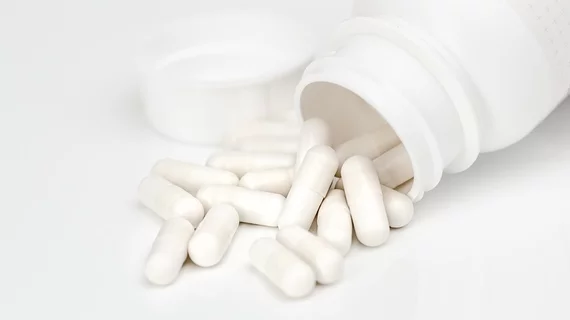A dietary supplement commonly used to relieve osteoarthritis and joint pain may also double as a cardioprotector, Tulane University researchers reported in The BMJ May 14.
First author Hao Ma and colleagues’ study of nearly half a million UK Biobank participants centered around glucosamine, a non-vitamin, non-mineral supplement taken to ease pain caused by the inflammation, breakdown and eventual loss of the cartilage cushioning a patient’s joints. Its effectiveness as a remedy for joint pain continues to be debated in the medical community, yet around one-fifth of Americans consume it daily.
Ma and co-authors said evidence from epidemiological and animal studies suggests glucosamine’s anti-inflammatory properties and its ability to mimic a low-carbohydrate diet could play a preventive role in CVD, potentially also reducing mortality. They enrolled 466,039 Biobank participants in their prospective cohort study, which sought to examine the relationship between habitual glucosamine use and risk of CVD events including death from CVD, coronary heart disease (CHD) and stroke.
Participants completed a questionnaire on supplement use at the study’s baseline and were followed for an average of seven years, up to 2016. In all, 19.3% of the population reported supplementing with glucosamine on a regular basis; those individuals were more likely to be older, women, non-smokers and more physically active. Despite glucosamine users reporting healthier diets and lower alcohol intake, they also exhibited a higher instance of hypertension, high cholesterol and arthritis.
Ma et al. reported there were 10,204 total incident CVD events during the study’s follow-up, including 3,060 CVD deaths, 5,745 CHD events and 3,263 stroke events. After adjusting for age, sex, BMI, race, lifestyle and dietary factors, drug use and other supplement use, glucosamine was associated with:
- A 15% lower risk of total CVD events
- A 22% lower risk of CVD death
- An 18% lower risk of CHD
- A 9% lower risk of stroke
The team also found the associations between glucosamine use and CVD risk were statistically significantly modified by whether patients were smokers or non-smokers.
“Inverse associations of glucosamine use with CVD outcomes were stronger in current smokers than in former smokers or never smokers,” the authors wrote. “We found habitual glucosamine use was associated with a 12% and an 18% lower risk of CHD in never and former smokers, respectively, compared with a 37% lower risk in current smokers.”
Ma and colleagues said there are a number of mechanisms that could explain their findings, which were in line with previous glucosamine studies. In one study of National Health and Nutrition Examination Survey (NHANES) data, researchers found regular use of glucosamine was linked to a significant reduction in C-reactive protein concentrations, which is a marker of systemic inflammation. Another trial in mice found glucosamine decreased glycolysis and increased amino acid catabolism in the rodents, acting as a low-carb diet that could benefit their heart health.
“Other mechanisms might also be involved, and future investigations are needed to explore the functional roles of glucosamine in cardiovascular health,” Ma and co-authors said. “Habitual use of glucosamine supplement to relieve osteoarthritis pain might also be related to lower risks of CVD events.”

